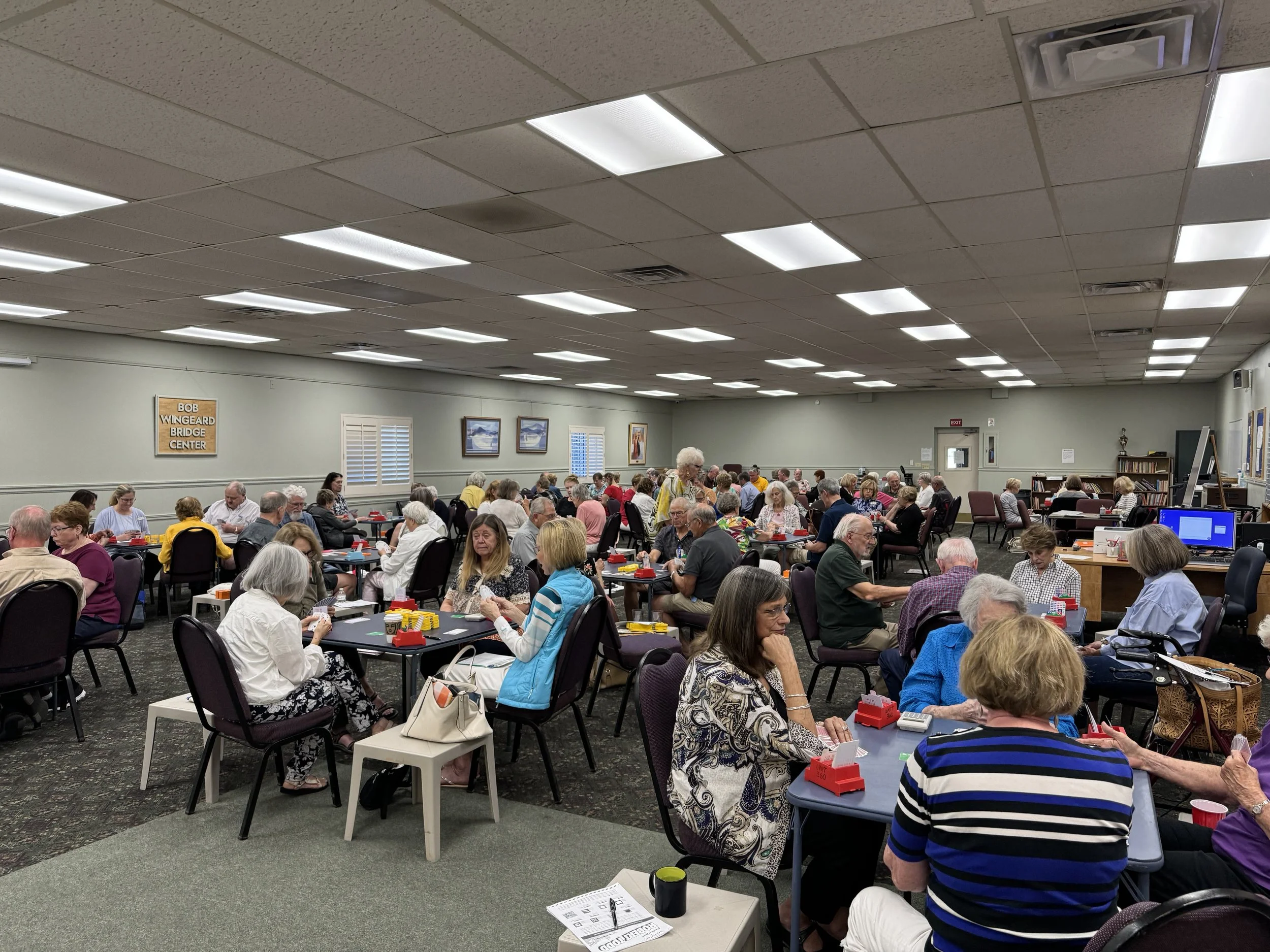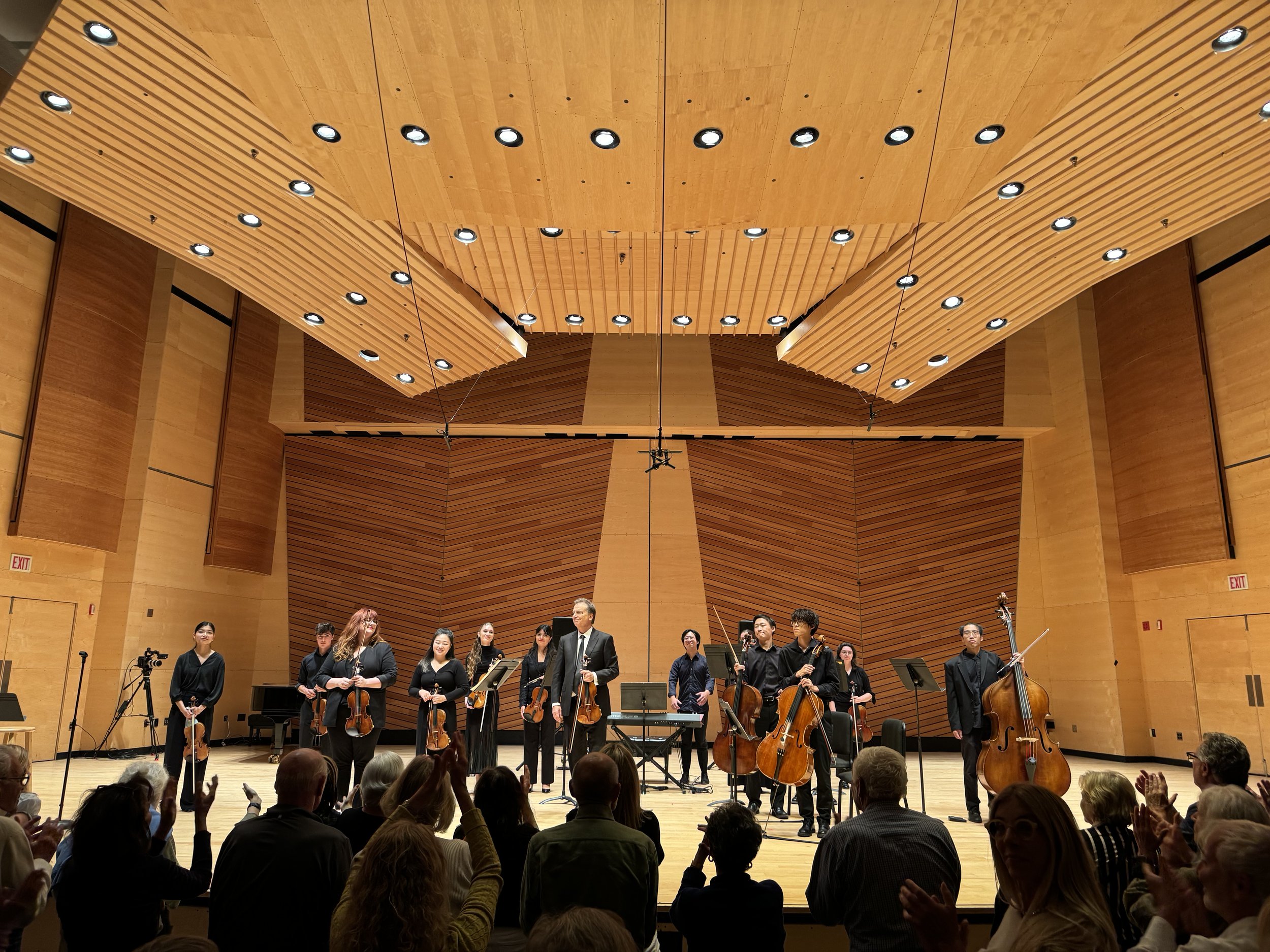Recent This Week in Bridge (TWIB) Lessons
When partner makes a bid and we choose to bid a suit of our own, it is called a freebid. In most normal situations freebids show values (called positive freebids) and are often forcing 1-round. We’ve all heard the saying -- a new suit is forcing by an unpassed hand. Unfortunately, this is not always true, but it is often our agreement. Let’s look at freebids made by a passed hand and see how the fact that we have already passed changes these situations.
Jumping in the auction eats up a lot of bidding space, which is likely to make communicating with partner more difficult. Since our jump bid may make future communication more difficult, it should have a specific meaning. When partner opens the bidding, Responder’s jump shifts can be used to show a variety of different types of hands. We need to decide, as a partnership, which ones we want to use. We will choose different agreements for different situations.
One of my favorite sayings is “2NT is a convention, not a contract.” In specific situations, Responder can use 2NT as conventional raise of Opener’s suit. Sometimes we need to choose between several different conventional methods for competitive auctions. Here we look at our options for how to best use 2NT.
When responding to partner’s 1-Major opening bid, Responder tries to apply the Law of Total Tricks (LOTT) – getting to the size of the partnership’s fit as quickly as possible. This is particularly true in competitive auctions but is also useful in constructive auctions. Responder must balance showing the size of their fit with showing their values. This LOTT bidding is especially effective when our side has a 9+card fit. In this case, the auction is likely to become competitive if the opponents have some values as well. Predicting this to happen, we would like to be able to compete to the 3-level with a 9+card fit as quickly as possible, eating up the opponents’ bidding space while showing our values. Bergen Raises are a set of conventional bids Responder can use when responding to a 1-Major opening bid with 4+card support (at least a 9+card fit). Let’s see how this system works.
When the auction begins 1m – 1NT (both bids by the opponents), it is rare that we want to compete in a minor suit. Usually in these auctions the opponents have the minors, since Responder has denied a 4-card Major. (Even if we have a 5+card minor suit, it could still be best to pass and defend 1NT.) In these auctions, it is effective to play a system geared towards the Major suits where we are most likely to have a fit. Spear is an artificial system that uses all the bids at the 2-level to show different Major suit hands. This gives us more options for how to compete in the bidding. Let’s see how it works.
The modern game continues to create interesting auctions and we need to make sure to discuss how to respond to new situations with partner. Some of the most interesting (and useful) competitive bids are when we use a suit that the opponents have bid – called a Cuebid. There can be many different meanings for bidding the opponent’s suit. A cuebid is a tool used in a variety of different ways based on the situation. We vary the meaning to describe the hand that is most logical and often most difficult to describe in another way. Let’s take a look at cuebids of the opponent’s suit in a variety of different auctions and make sure we are on the same page with partner about the meaning of these calls.
When Left Hand Opponent (LHO) opens the bidding, partner makes an overcall, and Right Hand Opponent (RHO) makes a negative double, then Advancer is in the middle of a complex competitive auction. Traditionally, a redouble in a competitive auction shows a strong hand (10+ points), but with everyone bidding it is not likely that Advancer is too focused on showing values. Instead, we want to design our agreements to let us best describe the most common kinds of hands. In this auction, Advancer having lots of values is not common. Let’s see how using redouble as a conventional bid, called a Rosenkrantz Redouble, can be more effective than this traditional value-showing redouble.
Bridge players keep finding more and more ways to use doubles, especially in low-level competitive auctions. The traditional double by the Advancer is the responsive double. This double applies when the opponents have bid and raised a suit and partner has taken some action in the middle (either a takeout double or a suit overcall). But when Left Hand Opponent (LHO) opens the bidding with a suit, partner overcalls a second suit, and Responder bids a third suit, then a double by Advancer is not a responsive double. It is a different kind of competitive double called a Snapdragon Double – a fancy name for another double that wants to compete in the bidding. Let’s see exactly what this double shows.
Our new series of TWiB lessons is a discussion of competitive bidding. We begin with a look at Support Doubles in unusual auctions and at the higher levels. If we play support doubles, these are important discussions to have with partner.
Active opening leads attempt to "go out and get" our tricks. Passive leads, on the other hand, attempt to just not give anything away or help Declarer. There are many different types of passive leads for many different situations. Here we take a look at several lead types and hands where a passive lead may or may not have the intended effect!
Declarer likes to try to win tricks with their little cards — setting up their length. As a defender it is our job to try to prevent this from happening. The way we do so is by keeping the cards in their long suits, called guarding a suit.
We usually win tricks with little cards (other than in the trump suit) by setting up our long suits. To establish these little cards in our long suits into winners, we need to play the hand well. This requires using our large cards in the best way possible to establish our little cards. That means we need to play our combinations as best as we can, manage our transportation, and have some good luck in the way the cards divide. Let’s see how we can properly manage our cards to take our tricks.
Our first discussion on card play is how to get the most out of the best card in every suit - the Ace! There are a variety of ways for the Ace to help us and here we look at how to get the most out of this important card.
When our left-hand opponent opens the bidding and the auction passes around to us, we have a big decision to make – should we get into this auction, or should we leave the opponents to play at the 1-level? We have a variety of bidding tools to help us compete in the bidding, but we need to use our judgment about when to compete in the bidding and when to keep quiet. Here we look at some of the classic bidding situations where we have a difficult decision and then overview some of our bidding tools in these auctions.
One place that we do not need a jump bid to show a weak hand is in the passout (PO) seat, also known as the balancing seat. In this seat with a weak hand, say 5-8 HCP, and a long suit, we would not bid; we would simply pass the hand out. Bidding here with so few HCP may give the opponents a chance to reach a better partscore or game that they may not otherwise reach. Since we will not bid in the PO seat with a weak hand and we could make a simple overcall with 9-10 HCP and a long suit, then a Jump Overcall in the PO seat is free to be used to describe a different type of hand that can otherwise be difficult to show.
A balancing 1NT bid can be a wide-ranging action, about 11-15/16 points. This 5-point range is much larger than most notrump bids and leaves partner with a more difficult bidding situation. Range Stayman is a tool that can help Advancer better determine the values of our hand and if game is a possibility.
Our TWiB lesson is about Balancing NT and some other balancing options. We look at auctions where we can balance with 1NT with a wider range of values, and we look at what to do with some hands where 1NT isn't an option.
We start with a look at the modern evolution to more aggressive 1NT opening bids: 14 -16 point 1NT opening bids. We discuss how to bid if we agree to play this, both as an Opener and as Responder.
There are certain auctions where we have made a bid that has “fully described our hand” and we leave the bidding up to partner. In auctions like these we usually are not very sure of what partner has for their bid and we want to leave any further decisions up to them. But sometimes we have more shape than partner expects or our instincts tell us that it is right to bid on. When that is the case we do NOT want to just take over and bid again – we told partner we would not bid any more after our first bid. In an auction like this we can use a double as a conventional bid saying “I want to bid more”. This is called an I Want to bid Double and it applies in very specific situations.
Lead-directing doubles can be helpful in getting partner off to a good opening lead. These lead-directing doubles are common when the opponents make an artificial bid. When the opponents make a cuebid of our suit, a lead-directing double is also very common. Here we focus on this situation in detail to structure our agreements to allow us to communicate in the most effective way we can.
In competitive auctions where the opponents have found a fit, we compete aggressively – especially at matchpoints. We frequently use double (for takeout) with three-suited hands and sometimes with two-suited hands. To handle these situations, we want partner (Advancer) to have a tool to help us find our best fit. As usual, in competitive auctions our choice of convention will be 2NT. This gadget is called Scrambling 2NT.
Good/Bad 2NT gives Opener two ways to compete to the 3-level – by bidding directly with a “Good Hand” or by bidding 2NT first with a “Bad Hand”. Using 2NT as a relay bid, instead of a natural call, allows for a more precise description of Opener’s hand. Let’s see how it works through examples.
When the opponents stay out of our auctions, we tend to have clear agreements about the meaning of a 4NT bid – usually Quantitative in a NT auction and Keycard in a suit auction. But in a competitive auction we are more likely to use 4NT as a bid showing two places to play. Let’s look at some of these auctions so we know what partner is trying to do when they use 4NT in a competitive auction.
When the opponents open the bidding with a 3-level preempt then much of the tension in our decision-making process comes around “Should we bid beyond 3NT?” This is especially true when the opponents open the bidding with a 3-Major preempt, because when we have one long minor suit then we likely want to play in 3NT or 5-minor. This allows us to use 4-minor in some interesting conventional ways, just as we do vs. a 2-level preempt.
When the opponents open at the 3-level or 4-level they put a lot of pressure on us to make difficult decisions without much room to maneuver or describe our hand. This preempt will force us to either double or overcall at a very high level – we will not have many of the options that are available to us at lower levels. Let’s look at each of these options and see how we need to adjust our thinking and bidding because of the lack of space and options available to us.
When RHO opens a 2-level preempt, they have started eating up our valuable bidding space, but this is just the start of their attack on us. LHO may join in the attack and raise the preempt, making our life even more difficult. When we are bidding over RHO’s 2-level preempt we should keep this in mind. We need lots of tools to deal with this situation. Let’s look at these options.
One of the most common gadgets that we use when partner opens 1NT is Stayman. We primarily use Stayman to search for a 4-4 Major suit fit. After Stayman, sometimes we want to have a way to raise partner’s suit where they cannot pass. We will want a “Forcing Raise” (similar to Jacoby 2NT or Inverted Minors) in order to find out more about Opener’s hand. This is missing from a standard bidding system. It is a valuable tool for making a slam try while keeping the auction from getting too high.
Lebensohl is an excellent system for dealing with interference over our 1NT opening bids, but it has some flaws. In Lebensohl auctions, we will sometimes play the hand from the “wrong” side (Responder’s side), and Responder often has three strengths (buckets) to describe. Let’s see how Transfer Lebensohl is an upgrade to help solve these problems.
When we open the bidding with 1NT, showing 15-17 points, if an opponent makes a penalty double, we are less likely to be looking to invite or bid game. We are usually looking to escape from a 1NT contract and attempt to find some safer place to play. This safe place will hopefully be our largest fit or a long suit in the weak hand (in Responder’s hand). In order to find this place to play we need to look at how Responder’s bidding options change after a penalty double.
There are many systems the opponents play in order to interfere over our 1NT opening bid, but almost all of these systems use the 3-level (actually 2NT+) for the same meanings – 2NT as a weak bid showing both minors and 3-level bids as weak with a long suit, preemptive. It is important that we and partner are on the same page for how to deal with this higher-level interference.






























